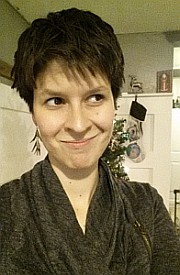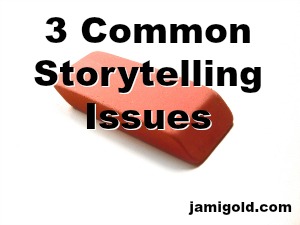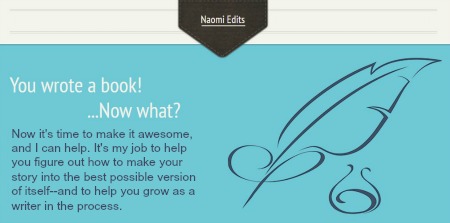Those of you who follow me on Twitter know that I share lots of writing-related links (in addition to fun stuff like geeky movie trailers and cute animals, of course *smile*). Twitter can be a great place to find writing chats and blog posts with advice and insights we haven’t seen before.
Recently, I came across several of editor Naomi Hughes’s Twitter threads about writing craft and editing tips, some of which she compiled in Storify and are now archived. (Here’s the Storify archives about character arcs, most common issues (and a second thread on common issues), showing vs telling (and a second thread on that topic), the editing process, and villains.)
Her advice really got to the heart of many issues I’ve seen in my writing years (as well as in my freelance editing), so I asked her to come by and share her tips with us. Not only did she agree, but she’s going to be joining us for a series of posts, each focusing on a different level of editing.
The names and specifics of those different levels can vary somewhat, so we’re going to concentrate on the functions of each edit rather than the names. For example, developmental editing can sometimes be called content editing or structural editing, yet no matter the name, we’re focusing on the big picture for how to strengthen the storytelling.
Going along with that example, today Naomi is sharing the most common issues she sees at the story level of developmental editing. Plus, she’s got the inside scoop on how to fix those issues!
Please welcome Naomi Hughes! *smile*
*****
The 3 Most Common Storytelling Issues
Hi guys! I’m Naomi Hughes, young adult writer, editor, and commandeer-er of the generous Jami Gold’s blog for the day (does commandeering a blog make me a pirate? Because I’m not gonna lie, I’d love to rock a tricorn hat).
This is the first in a series of posts I’ll be doing about the most common problems I come across during each of the three main stages of editing—and how to fix them. Up today: developmental editing!
What Is Developmental Editing?
Developmental editing is the first round of revisions. It’s all about the big picture, all about finding the story you really mean to tell.
The biggest changes tend to happen during this phase. Characters are cut, motivations are remodeled, entire plots are tossed out on their ears.
It’s all done in service of developing your story, boiling it down and getting rid of the dross and then rebuilding the good stuff that’s left over to make it twenty times better than it was before. It’s one of the most exhilarating (and sometimes exhausting) stages of editing, and it’s also often the place where you’ll get the biggest payoff.
As a freelance editor (and an assistant editor at Entangled, a kick-butt romance publisher), I tend to see the same issues crop up again and again when authors are going into developmental edits. And that’s okay!
Early drafts are supposed to have mistakes, because the only way to find your story is to explore it first and that usually means taking a few wrong turns along the way. That’s why developmental edits exist.
But in the interest of helping you avoid at least some of those wrong turns, here are the three most common problems I spot during developmental edits and how you can fix them:
#1: Lack of Agency
I see this most frequently in books with female main characters (and also for the female love interests in some romances), but it can happen in any story.
First, let’s define agency:
Agency is the ability of a character to move their own story forward,
to push their slice of the plot onward for better or worse
with their actions and decisions.
If a character doesn’t have agency, they don’t truly own their story. They tend to be passive, reactive instead of proactive, pulled through the story by external events and other people’s decisions instead of plowing through obstacles on their way toward wherever it is they’re trying to go (or on their way toward getting whatever it is they’re trying to get).
Fix-It Tips:
There are a few ways to fix a character’s lack of agency.
- First, do they have a goal?
Every character, and most importantly the main character, needs to have a goal that is specific, personal, tangible, and measureable. If a character has nothing to move toward, nothing to care about and try to attain, they’re naturally going to be more reactive and passive.
- Another thing I tend to see a lot—again, particularly with female characters—is confusing “strong” characters with physical strength.
Just because a character is an awesome ninja warrior girl doesn’t mean she automatically has agency. If she has no means of creating momentum in her own story, and especially if her main job is to serve as some sort of motivation or reward for a male character, she might as well be a sexy lamp.
- Lastly, try to give your main character some sort of personal stake in the story.
Often I’ll see a character who’s thrust into this huge conspiracy or has to face off with this world-ending villain, and it’s just because that character basically happened to stumble upon the plot. That can sometimes work, but usually it’s much more powerful if the story is relevant to that particular character in some deep, personal way that makes the plot more important to the hero/heroine than to anyone else in the world.
#2: No Character Arc
One thing I like to tell my writers is that a story will matter to readers when it matters to the character.
If a story doesn’t affect the hero/heroine, if it doesn’t challenge them and change them on some fundamental level, it will leave us unmoved as well. The best way to tell whether your main character (and ideally important secondary characters too) has a growth arc is to look at that person at the beginning and the end of the story.
Are they the same person as they’ve always been, and only their surroundings have changed? That’s a sign that you need to deepen their growth arc.
Fix-It Tips:
The most common type of growth arc for a main character is a positive one: the hero/ine starts with some personality-based flaw or a faulty worldview, and then as they progress deeper into the story, the plot forces them to confront and acknowledge that issue.
They face off with it a few times (knowingly or unknowingly) and usually fail or only make small amounts of progress, until they finally overcome their flaw with great effort somewhere around the climax. It’s only as a result of that internal victory that they’re then able to finally obtain external victory and win their happy ending.
There’s also the negative arc, where a character eventually succumbs to or is seduced by their flaw, but that’s less common—unless we’re talking about villains, who are a natural fit for negative arcs. Anakin Skywalker in Episodes I-III of Star Wars is a great example.
(Note from Jami: I’ve also heard of flat arcs, and if neither positive or negative arcs fit your story, check out K.M. Weiland’s series on character arcs for more information.)
#3: And Speaking of Villains…
That’s the final most common issue I run into at the developmental editing stage. It’s sometimes easy to think that for a character to be a decent villain, they must be Truly Evil.
That typically means a lot of torture-for-fun, the murdering of their own people just to prove how bad they are, and monologues explaining why they want revenge (that’s one of the most common bad-guy motivations, even though it’s very tough to pull off in an original way) or how they’re actually, seriously crazypants.
(Hint: “crazy” does not count as a motivation. And if your villain has a real-world mental disorder, you MUST do your research, and keep in mind that disorder is a real thing and some of your readers will probably suffer from it and may be adversely affected by the way you’re portraying it.)
But the thing is, Truly Evil villains tend to be forgettable. They blend together; they’re boring.
Fix-It Tips:
A villain—like a hero—can be anyone. They don’t need to be Truly Evil. They just need to have a goal that opposes your protagonist’s goal.
The best villains are as realistic and unique and fleshed-out as the story’s heroes; they have their own internal conflicts, their own personalities, their own personal (and even relatable!) motivations.
Great villains can make or break a book. Try to layer them as deeply as you can, and think about the story from their point of view—because really, a lot of villains think they’re the true heroes.
And that’s it for developmental edits! Huge thanks to Jami for having me. I’ll be back next week to chat about the middle stage of revisions: the mysterious, seldom-heard-of scene edits. See you there!
*****
 Naomi Hughes is a freelance editor and an Assistant Editor at Entangled Publishing. She’s also a writer, and loves to hide sneaky fandom references (Doctor Who! Pacific Rim! Sherlock!) in her quirky young adult stories.
Naomi Hughes is a freelance editor and an Assistant Editor at Entangled Publishing. She’s also a writer, and loves to hide sneaky fandom references (Doctor Who! Pacific Rim! Sherlock!) in her quirky young adult stories.
She lives in the semi-rural Midwest with her husband, the most adorable preschooler on the planet, and several pets who are all named after characters from Avatar: The Last Airbender.
You can follow Naomi on Twitter at @NaomiLHughes, where she frequently hosts giveaways and chats about publishing advice, and find her at her website, where she offers editing help for everything from queries and synopses to submission packages and full manuscripts.
(*psst* Note from Jami: Naomi also shares a fantastic Revision/Plotting Checklist on her site.)
*****
Thank you, Naomi! As you know, I’ve shared several of your recent advice threads on Twitter, so I’m thrilled to include your knowledge here too. *grin*
I’ll admit that I struggle with villains the most as an author. Although my stories include lots of antagonists, my genre (paranormal romance) usually expects a “big bad” villain as well, and Naomi’s insight to see the story from the villain’s point of view (as though they were the hero) is one that I try to remind myself of frequently.
As a freelance developmental editor, I agree with Naomi’s list, and I’ll share a bonus fourth issue that I’ve seen even in traditionally published books: Missing Motivation.
We can become so used to our story and our characters that we forget to provide insights to readers on why our characters are acting in a surprising or confusing way. If Naomi doesn’t chime in below with her thoughts for how we can fix that issue, I’ll take a stab at it in a future post.
Hopefully, these tips for what to watch out for—and how to fix those issues—will help our storytelling. It doesn’t matter how clean our prose is if we don’t have a story that grabs readers and keeps their interest. *smile*
P.S. Don’t miss the rest of Naomi’s series, covering scene editing and line editing.
As a reader, what storytelling issues have you noticed? Have you seen the issues mentioned above in stories? Which ones do you struggle with as a writer? Do you have any tips to add for how to find or fix these issues? Do you have any questions for Naomi?


